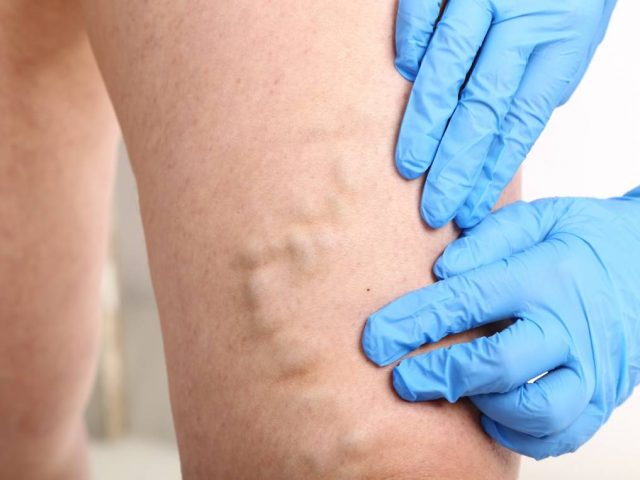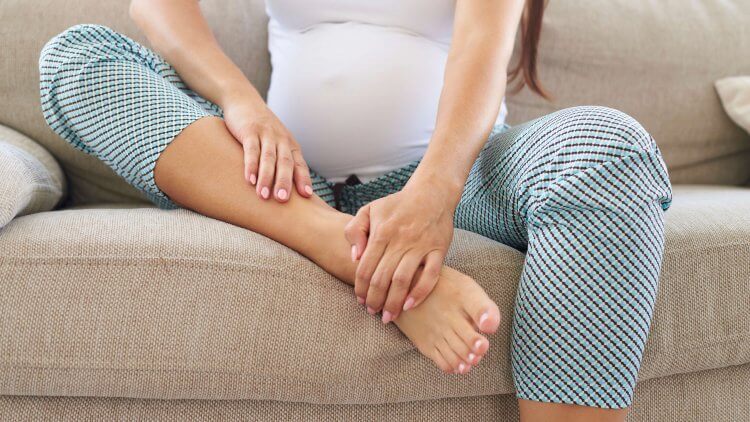For what reason do varicose veins happen?
Leg veins have one-way healthier valves to help the blood flow back to the heart. Your calf muscles pump the blood up towards your hear during walk, and the valves stop it falling back.
Varicose veins develop when one of these one-way valves stop working or nor working properly. This causes the blood to pool in the veins, which stretches the vein walls and causes the veins to swell, twist and bulge. If they become large enough , you can see the bulge of them under your skin.
Why are they common during pregnancy?
There are 3 main reason to increase your chances of developing varicose veins during pregnancy.
- During pregnancy, more blood produce than usual to help your baby grow by your body.
- As the baby grows, your uterus presses on and partially blocks the veins that are returning blood from your legs to your heart.
- Your pregnancy hormones make the walls of your veins softer, which makes it harder for them to work properly.
In each case, blood tends to pool in your legs, giving you swollen legs and varicose veins.
Where varicose veins can develop?
Varicose veins mainly develop in the legs. However, you can also get them in the vulva (at the vaginal opening) or rectum. Varicose veins of the rectum are also known as haemorrhoids.
Are they painful or cause any other health problems?
Varicose veins can cause fairly bad aches and pains in your legs. Your legs might feel heavy or restless, and they might throb, burn or cramp. Some women has no problem when they find varicose veins but that’s not common.
You’ll probably find that any symptoms you have are worse later in the day since you’ve been standing for longer. By the next morning, you’ll usually feel better because you’ve been lying down and the pressure on your veins has eased.
Can anything be done to prevent them?
Walking or swimming help your blood circulation substantially and are helpful while pregnant. Some exercises like calf raises and walking on the spot are good for helping blood flow in the legs.
There’s definitely no other way to prevent varicose veins when you’re pregnant. However, they might be less likely to develop if you:
- stay active
- don’t sit for too long
- if you currently wearing high heels, stop wearing them
- when you are resting and sitting , raise your legs up, higher than your hips if possible.
- avoid wearing anything too tight around your waist or pelvis
How can you get rid of varicose veins?
If you do develop varicose veins, they will probably go away without treatment by the time your baby is 3 to 4 months old. But for some women, this can take up to a year.
Meanwhile, you can try wearing compression stockings, taking medication, having massage or using reflexology. These options may or may not help you since none have been proven to be effective.
Some people have surgery to remove the affected vein, but if you’re thinking about this, wait until at least one year after the birth of your baby to see whether the varicose veins go away without treatment.
Talk to your doctor or midwife if you are worried about varicose veins. They can give you more information and help you find the best way to relieve any symptoms you’re experiencing.
What’s the difference between stretch marks and varicose veins?
Stretch marks are thin pink or purple lines on the surface of the skin. You’ll usually see them pop up on your stomach as your pregnancy progresses since they are formed when the skin stretches. Varicose veins are different because it is the veins that are affected, not the skin.
Living with varicose veins
If you have varicose veins, you can make your legs more comfortable by:
- walking or swimming regularly
- watching your weight
- changing positions if you stand or sit for long periods of time
- sitting with your legs up as often as you can
- wearing support tights or stockings – available from most pharmacies, these help circulation in the legs and might also support your leg muscles

